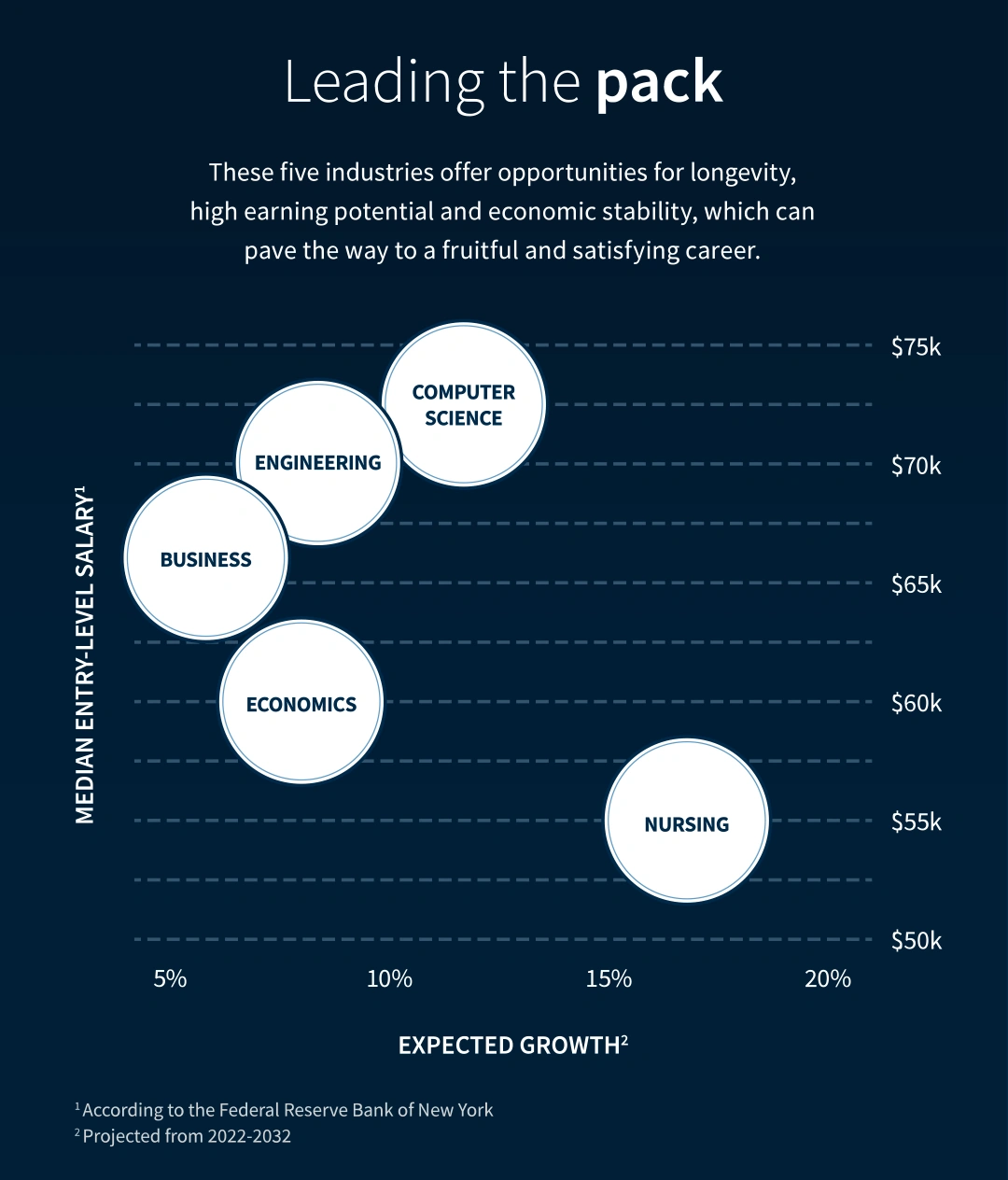
Whether you’re advising a college-bound student as a parent or mentor or seeking to further your own education, we’re giving you a glimpse into the most popular industries among college students to offer insight into what might be the most attractive fields today.

Computer Science
With computer science boasting the highest average salary and expected industry growth second only to nursing, you can master the tech that keeps our modern world running. Whether fighting hackers or creating the next great leap forward in artificial intelligence, you can make a difference and get paid handsomely.
Engineering
Engineers are expected to be in high demand due to the increasing call for sustainable energy sources. Pursuing this career path offers individuals the opportunity to make a positive impact on the planet, while also benefiting from strong earning potential and steady growth in both public and private sectors.
Business
With so many jobs and specializations available, from marketing to finance, it’s no surprise a business degree remains a top choice for students. It provides the knowledge and skills employers want like communication, problem-solving, and leadership. Opportunities in the business sector are as diverse as they are lucrative.
Social Sciences
These degrees focus on developing strong analytical, communication, and research skills. They offer a multitude of career paths across diverse industries, with specializations like economics and political science. This could be an ideal major type for critical thinkers looking to contribute to the betterment of communities.
Nursing
As people live longer, the demand for dedicated healthcare workers will continue to climb. And with high demand comes job security for those who want to make a difference in people’s lives. Nursing offers one of the highest expected growth rates in any industry over the next 10 years.
Sources: BestColleges, Coursera, Crimson, MyDegreeGuide, Research.com, U.S. Bureau of Labor Statistics




